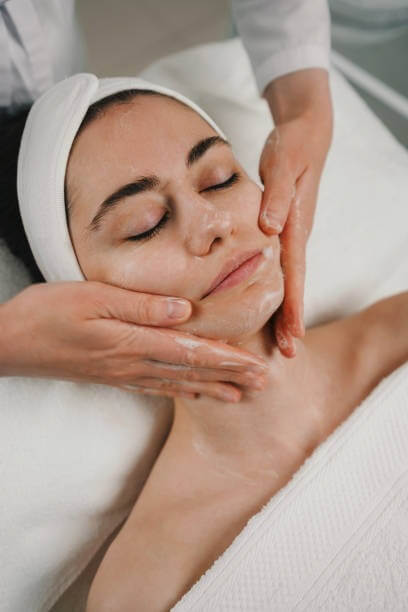Your skin is your body’s largest organ and acts as your first line of defense against the elements. As the seasons change, so do the conditions your skin must contend with—ranging from dryness and flakiness in the winter to oiliness and UV damage in the summer. Unfortunately, many people maintain the same skincare routine throughout the year, which may not be sufficient for protecting and nourishing the skin in every season. To maintain a healthy, vibrant complexion year-round, it’s essential to adapt your skincare routine to the changing seasons and the unique needs they bring.
This guide will walk you through the changes your skin undergoes with each season and provide science-backed, dermatologist-informed advice to help you maintain a skincare routine that works—no matter what the weather brings.
Understanding Seasonal Skin Changes
Each season brings with it a different climate, and this climate directly influences skin behavior. During colder months, lower humidity and cold winds strip the skin of moisture, making it dry and prone to irritation. In contrast, summer’s heat and humidity can increase oil production, leading to clogged pores and breakouts. Spring and autumn, as transitional seasons, often come with their own challenges, such as allergies, changing temperatures, and unstable humidity levels.
Your skin has an innate ability to adapt to environmental changes, but it still needs support. By understanding the seasonal triggers and adjusting your regimen accordingly, you can help your skin maintain its natural barrier and function effectively year-round.
Winter: Combatting Dryness and Sensitivity
Winter is often the harshest season for your skin. The drop in humidity, colder air, and use of indoor heating systems all contribute to moisture loss. Your skin may feel tight, flaky, itchy, or even crack. People with conditions like eczema or rosacea may notice increased flare-ups during this season.
To address winter skin concerns, hydration must be the cornerstone of your skincare routine. Switch to a richer, more emollient moisturizer that contains ingredients like ceramides, glycerin, or hyaluronic acid. These humectants and barrier-repairing agents work together to draw moisture into the skin and lock it in. Avoid alcohol-based toners or astringents, which can further dry the skin.
Cleansing should be gentle during the winter. Choose a non-foaming, sulfate-free cleanser that doesn’t strip the skin of its natural oils. Limit hot showers, as tempting as they may be, because hot water can exacerbate dryness by breaking down the lipid barrier.
Introduce a nourishing facial oil or a hydrating serum into your evening routine. Ingredients such as squalane, jojoba oil, and niacinamide can be particularly effective in maintaining skin suppleness during this season. For those experiencing irritation, incorporate soothing agents like colloidal oatmeal or chamomile extract.
Don’t overlook sun protection. Even on cloudy winter days, UVA rays can penetrate through the atmosphere and cause premature aging and skin damage. Use a broad-spectrum sunscreen with at least SPF 30 every morning.
Spring: Rebalancing and Revitalizing
Spring represents a season of renewal—not just in nature, but for your skin as well. As the cold weather fades and temperatures begin to rise, your skin transitions from a dry state to a more balanced, sometimes oily condition. Spring can also trigger allergies, which may cause redness, puffiness, and itchiness around the eyes and cheeks.
This is the ideal time to gradually shift from heavy creams to lighter moisturizers. Gel-based or water-based formulations that contain antioxidants and hydrating agents like aloe vera can help maintain moisture while keeping the skin breathable.
Exfoliation becomes especially important during this time. Months of winter buildup—dead skin cells, environmental toxins, and heavy creams—can clog pores and dull the complexion. Consider incorporating a gentle chemical exfoliant, such as lactic acid or mandelic acid, two to three times per week to rejuvenate the skin and promote cell turnover.
With increased sun exposure and outdoor activity, your skin becomes more vulnerable to UV damage. Reinforce the use of sunscreen and consider adding an antioxidant serum containing Vitamin C in your morning routine. This not only protects against environmental stressors but also helps brighten the skin and reduce pigmentation.
Pay close attention to areas affected by seasonal allergies. Cooling eye gels with caffeine or green tea extract can reduce puffiness. If you experience hives or eczema flare-ups due to pollen, consult a dermatologist for hypoallergenic skincare products and treatment options.
Summer: Managing Oil and Sun Protection
Summer is the season where skin tends to be at its oiliest. High temperatures, increased sweating, and prolonged exposure to the sun can lead to clogged pores, acne, sunburns, and pigmentation issues. Your skincare routine should focus on balancing oil production, preventing breakouts, and protecting against UV damage.
Start by choosing a lightweight, non-comedogenic moisturizer. Even oily skin needs hydration, but avoid heavy occlusive formulas that can trap sweat and oil. Look for moisturizers containing hyaluronic acid or niacinamide, which help regulate oil production without clogging pores.
Use a gentle, foaming cleanser that can remove excess oil and impurities, especially if you’re prone to acne. Cleansing twice a day—morning and night—is generally recommended during the summer months. However, over-cleansing or using harsh products like alcohol-based toners can strip the skin and worsen oiliness by triggering more sebum production.
Sunscreen becomes non-negotiable in the summer. Use a broad-spectrum sunscreen with SPF 50, especially if you’re spending extended periods outdoors. Reapply every two hours and after swimming or sweating. For those with acne-prone skin, opt for mineral sunscreens containing zinc oxide or titanium dioxide, as they are less likely to cause breakouts.
If you wear makeup, consider switching to tinted moisturizers or lightweight BB creams with SPF. These allow your skin to breathe while providing coverage and protection.
Add antioxidants to your routine. Serums with Vitamin C, E, or ferulic acid offer photoprotection and help neutralize free radicals caused by UV exposure. These antioxidants also help prevent sun-induced pigmentation and maintain an even skin tone.
During summer, avoid using overly potent exfoliants or retinoids during the daytime, as they can increase sun sensitivity. If you’re using these products, reserve them for your nighttime routine and ensure your skin is properly protected during the day.
Autumn: Repair and Prepare
Autumn is a time for recovery. After months of sun exposure, many people experience uneven skin tone, pigmentation, and dehydration. As temperatures begin to drop, the air becomes drier, signaling the need to reintroduce moisture and protective ingredients into your skincare routine.
Start by assessing the damage caused by the summer. If you notice sunspots or dullness, consider incorporating exfoliants such as glycolic acid or retinoids to accelerate cell turnover and promote collagen production. These ingredients help fade hyperpigmentation and refine skin texture.
Moisturizers should become richer again in preparation for the colder months ahead. Look for formulations that contain ceramides, peptides, and hyaluronic acid to strengthen the skin barrier and retain moisture. You can also reintroduce facial oils if your skin starts to feel tight or flaky.
This is a good time to start incorporating barrier-repairing masks and overnight treatments into your weekly routine. These products help restore the skin’s hydration levels while also enhancing elasticity and smoothness.
Consider booking a professional treatment, such as a chemical peel or laser therapy, in the early fall to target summer-related pigmentation or rough texture. Cooler weather reduces the risk of post-treatment sun exposure, making it an ideal time for more intensive skin therapies.
Reevaluate your cleanser as well. If you were using a foaming cleanser in the summer, transition back to a creamier or milder version to prevent stripping the skin as the air becomes less humid.
Sunscreen use should remain consistent. Just because it’s cooler doesn’t mean UV rays are any less harmful. Daily use of SPF will help maintain the results of any treatments and prevent new damage.
Adapting to Your Skin Type
While seasonal changes affect everyone, it’s important to remember that your individual skin type plays a crucial role in how your skin reacts. Oily skin may experience more intense breakouts in the summer, while dry skin becomes even more parched in the winter. Combination skin can be especially tricky, requiring localized care. Sensitive skin may react to environmental stressors more severely, including windburn, sunburn, or allergens.
Understanding your skin type allows you to fine-tune your seasonal routine. Always patch test new products when transitioning between seasons to minimize the risk of irritation. And remember, your skin may not fall neatly into one category year-round. Be flexible and observant.
Hydration, Diet, and Lifestyle
Topical products are only part of the equation. Hydration from within is essential in every season. Drinking enough water supports the skin’s elasticity and moisture levels. During winter, you may need to make a conscious effort to maintain your water intake since thirst signals can decrease in cold weather.
Your diet should also reflect the season. In the summer, fresh fruits rich in antioxidants and water content—like watermelon, berries, and cucumbers—help keep your skin hydrated and protected from oxidative stress. In the colder months, focus on healthy fats such as avocados, nuts, and oily fish to help nourish the skin barrier.
Sleep and stress management are equally important. High stress levels can trigger breakouts and inflammation, while poor sleep can lead to dullness and under-eye circles. Make time for rest and rejuvenation, just as you do for your skin.
Conclusion: Be In Tune With Your Skin
There is no one-size-fits-all skincare routine. The key to healthy, glowing skin all year long is flexibility and attentiveness. By tuning into how your skin reacts to seasonal changes and adjusting your routine accordingly, you give your skin the best chance to thrive.
Seasonal skincare isn’t about buying a whole new shelf of products every few months—it’s about knowing when to swap out, layer, or minimize based on what your skin needs most. Whether it’s locking in hydration during winter or defending against UV rays in summer, each season offers a new opportunity to connect with your skin, listen to it, and treat it with care.
As always, if you’re unsure of how to adjust your routine or are experiencing persistent skin issues, consult with a board-certified dermatologist who can help personalize your regimen for both the seasons and your skin’s specific needs.
At Dermartisan, we believe skincare is more than just a routine—it’s a lifestyle of self-awareness, science, and care. Treat your skin like the dynamic, adaptive, and resilient organ it is, and it will return the favor year after year.






